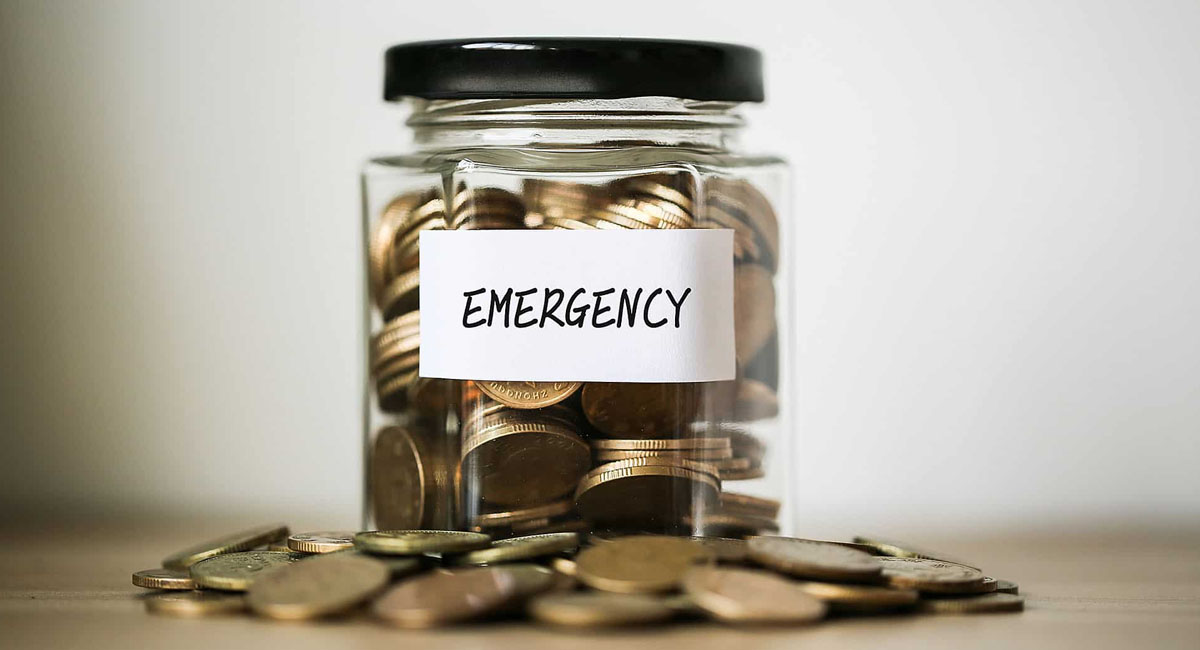No matter how careful of a planner you are, life happens. From unexpected medical bills to last-minute car expenses, financial emergencies can manifest at any time. Having an emergency fund is a great way to ensure that you are prepared for when disaster strikes. Although this may seem like a daunting task, you can continuously and responsibly contribute to an emergency fund so that you’re prepared for anything. Read on for some ideas to help you have the funds necessary to combat the surprises will throw at you.
Calculate How Much You Need
Before you begin saving for your emergency fund, you will need to establish what your goal is. Most financial experts recommend having at least four to eight months of living expenses in your savings. This emergency fund can help you and your family survive things like unemployment or other loss of income situations. Now, you won’t be able to put that much money in your emergency fund right from the beginning, but it is important to know how much it would require to keep you afloat financially. If you know your regular monthly costs, it’s easier to decide how much should be in the emergency fund.
Pay Yourself First
Each paycheck, before paying any of your bills or expenses, set aside a portion of your earnings for your emergency fund. Not only will this help you build your emergency fund, but it will also get you in the habit of saving. Many people run into problems when they don’t set the emergency money aside right away. You might tell yourself you’ll put the money in an emergency fund when you get your next paycheck, and then before you know it—the money is gone. Put the money into your emergency account before you have time to spend it or let your desires get the best of you.
Create a Budget
No matter how much or how little money you make, you can benefit from creating a budget. This popular financial tool helps put you in control of your finances. To create a budget, take a recent paystub and calculate your monthly earnings. Next, make a list of all your monthly bills and their due dates. Remember to include your “pay yourself first” savings as a bill. Once you have subtracted your expenses from your earnings, the money leftover is your discretionary spending. Try to put as much of that as possible towards your savings. You never know when you may need it in the future.
Direct Deposit
If you anticipate having difficulty sticking to a budget, direct deposit can be your best friend. This financial tool allows your employer to deposit your wages directly into your checking or savings account. In many cases, your employer may allow the funds to be split into more than one account. This allows you to automatically save your “pay yourself first” funds without ever seeing them.
Define “Emergency”
Once you decide where you will keep your emergency fund, you will need to create clearly defined parameters for the account. To help with this, consider writing down a list of conditions that a situation must meet before money can be withdrawn from the account. Typical emergency situations include car repairs, medical bills and school expenses. Those who are lacking in financial responsibility will use that hard-earned money to splurge on something that isn’t truly a dire need. If you make some guidelines for what you will and will not spend the money on, you’re less likely to spend it foolishly.
Saving money can be hard, but it does not have to be. With a little planning and a lot of patience, you will have a healthy emergency fund before you know it. Creating an emergency fund takes some self-discipline and control, however, you’ll be grateful to have the money when an emergency arises. Start saving the smart way, and you won’t find yourself up a creek without a paddle on the fateful day that the emergency pops up. The information for this article was provided by professionals who provide bail bonds in Sacramento.

